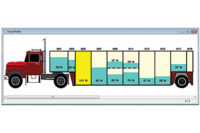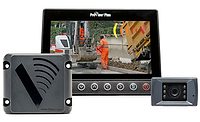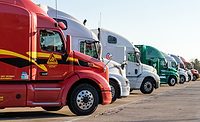Distribution
Pandemic prompts fleet managers to rethink long-term operational practices
Parts, staff shortages alter how fleet managers approach operations

It’s been nearly two and a half years since the pandemic officially started, and while most of us are eager to put its darkest days behind us, the lessons the COVID-19 era have taught delivery fleets are numerous and applicable in the (eventual) post-pandemic world. And they’ll likely help fleets work smarter in the years to come.
Leasing versus Buying
For Brandon Murphy, delivery and fleet manager at GG Distributing in Palestine, Texas, COVID-19 was the catalyst that accelerated his company’s plans to start leasing some equipment.
“The shortage of parts and the inability to order new equipment makes it extremely difficult to plan, budget and keep our fleet serviced and repaired,” Murphy says. “We have owned our own trucks in the past and due to the issues the pandemic caused, we are transitioning into leasing our tractors. With the lead time on new equipment and the actual quality of the trucks that are being produced, the simplicity of it being the lease company’s responsibility is worth the investment.”
When the shortage of diesel exhaust fluid (DEF) sensors hit last year, GG Distributing was left with several trucks parked with no way to repair them. All the company could do was wait.
“Moving toward leasing lets me focus more on our business operations,” Murphy says, “without the headache of tracking down parts and extra trucks when a unit needs repair.”
Equipment Forecasting
Because the out-of-whack supply chain has made equipment and parts procurement unpredictable, fleet managers have learned to recalibrate their expectations and plan accordingly.
“Forecasting equipment much further out is necessary,” notes Andrew Zak, director of fleet operations at Silver Eagle Distributors, Houston. “Previously, we would place new equipment orders a few months in advance. Now, we must place orders 12 to 18 months in advance to ensure we receive equipment on time.”
Inventory Adjustments
Further, Zak says Silver Eagle has had to increase its parts inventories and order high-moving parts in bulk.
“Supply chain issues have led to increased vehicle downtime,” he says. “Increasing inventory amounts and even stocking items previously thought to be unnecessary will help keep equipment rolling”
New Personnel Strategies
You can’t talk about the “new normal” without the conversation eventually turning to staffing and retention. Even though delivery is, by its nature, an in-person, job, there are facets of it that can be achieved remotely, if need be.
“The first thing that comes to mind is the implementation of eLearning for on-boarding purposes and ultimately continued personal development,” says Kelly Anderson, president of the consultancy the Kelly Anderson Group. “As fleets were concerned about bringing people into the office, we had several reach out for us to put together an on-boarding package that they could assign for drivers to take remotely.”
They then conducted virtual meetings to cover some of the personal information and complete the on-boarding paperwork.
And, it goes without saying, make sure you treat the people you do hire very well. Fleet technicians in particular, Zak says, have been increasingly difficult to source. “The pool of experienced techs has seemed to decrease dramatically over the past few years,” Zak observes. “Make sure you take good care of the techs you have. We also increased our recruiting efforts quite a bit to locate quality technicians.”
Looking for a reprint of this article?
From high-res PDFs to custom plaques, order your copy today!






